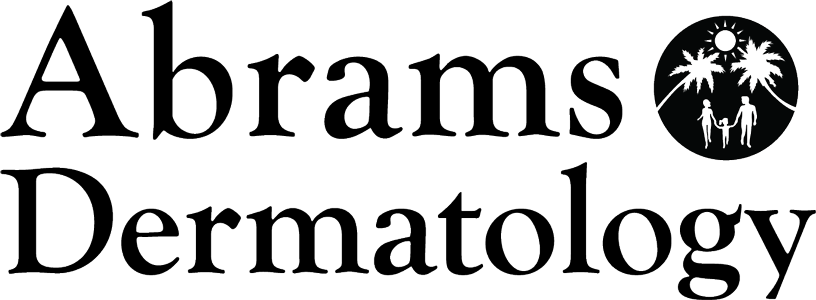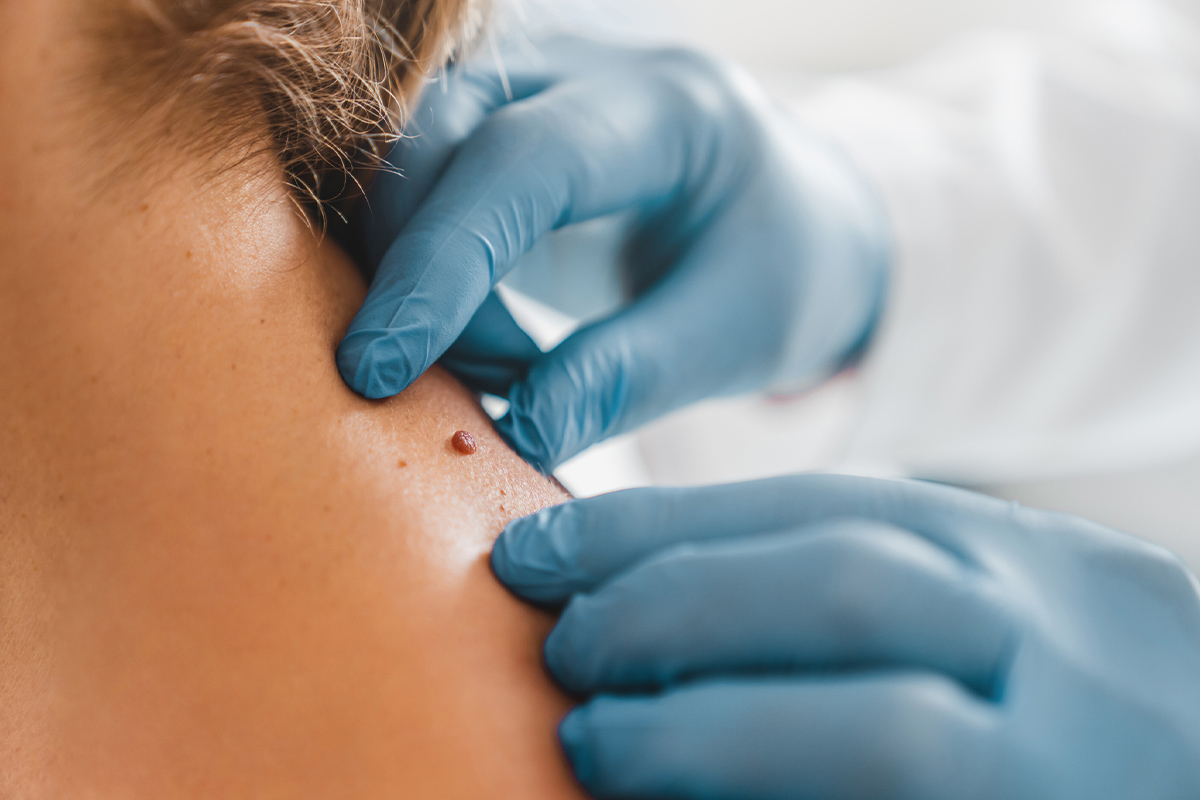Achieve healthier, clearer skin with expert treatment at Abrams Dermatology. Our team, led by dermatology specialist in Sarasota, Dr. Bradley J. Abrams, who specializes in diagnosing and managing various conditions, including acne, eczema, psoriasis, and skin cancer. From comprehensive skin exams to advanced dermatological treatments, we provide personalized care to address your skin health needs.
Acne
Acne is a common skin condition that occurs when hair follicles become clogged with oil, dead skin cells, and bacteria. It can cause pimples, blackheads, whiteheads, and cysts to develop on the face, neck, chest, back, and shoulders. Acne often begins during puberty due to hormonal changes but can affect individuals at any age. While not usually a serious health issue, acne can impact self-esteem and cause scarring if left untreated. Effective acne treatments in Sarasota are available from our premier dermatology clinic. Our skin experts can help you to manage and reduce acne symptoms for fresh, clear, blemish-free skin.

Signs and Symptoms of Acne:
- Blackheads (open comedones)
- Whiteheads (closed comedones)
- Red, inflamed pimples (papules)
- Pus-filled bumps (pustules)
- Large, painful lumps beneath the skin (nodules and cysts)
- Scarring and dark spots following breakouts
- Oily skin and visible pores
- Skin sensitivity and redness around affected areas
Actinic Keratoses
Actinic keratoses (AKs) are rough, scaly patches on the skin caused by prolonged exposure to ultraviolet (UV) rays from the sun or tanning beds. Often appearing on sun-exposed areas like the face, scalp, hands, and arms, they can vary in color from pink to red or brown.
AKs are considered precancerous because, if left untreated, they may develop into squamous cell carcinoma. Early detection and treatment are essential to prevent progression. Treatments range from topical medications to cryotherapy and laser therapy to remove or reduce AKs. Contact our office to speak to a Sarasota dermatology specialist for a personalized treatment plan.
Signs and Symptoms of Actinic Keratoses:
- Rough, scaly, or crusty patches on the skin
- Flat or slightly raised lesions, often less than an inch in diameter
- Red, pink, or brown discoloration
- Itching, burning, or tenderness in affected areas
- Dry, rough texture that feels like sandpaper
- Lesions commonly found on sun-exposed areas (face, scalp, ears, hands, arms)

Basal Cell Carcinoma (BCC)
Basal cell carcinoma (BCC) is the most common form of skin cancer, arising from the basal cells in the skin’s outer layer. It develops on sun-exposed areas like the face, neck, and hands due to prolonged UV exposure. BCC often appears as a small, pearly bump, a flat, flesh-colored patch, or a sore that doesn’t heal. Although BCC grows slowly and rarely spreads to other body parts, early detection and treatment are essential to prevent damage to surrounding tissues. Treatments offered in our Sarasota dermatology office may include surgical excision, MOHS surgery, and cryotherapy.
Signs and Symptoms of BCC:
- Pearly or waxy bump, often with visible blood vessels
- Flat, flesh-colored or brown scar-like patch
- Persistent, open sore that bleeds, oozes, or crusts and doesn’t heal
- Red, scaly, or irritated patch that may itch or hurt
- Raised, rolled edge around a central indentation or ulcer
- Lesions commonly found on sun-exposed areas (face, neck, scalp, hands)
Cyst
Cysts are closed, sac-like structures filled with fluid, semi-solid material, or air that can develop under the skin or within tissues. They often appear as small, painless lumps, but some may grow larger, become tender, or cause discomfort. Cysts can form due to various factors, including blocked glands, infections, or genetic conditions. They are typically found on the face, neck, scalp, or back. While most cysts are benign and harmless, they may need to be drained or surgically removed if they become painful or infected.
Signs and Symptoms of Cysts:
- Small, round, bump or lump under the skin
- Smooth, soft, or firm texture, depending on the type of cyst
- Skin-colored, white, or yellowish appearance
- May grow slowly over time
- Painless, but can become tender, red, or swollen if infected
- Can ooze foul-smelling fluid if ruptured
- Commonly found on the face, neck, scalp, back, or other body parts
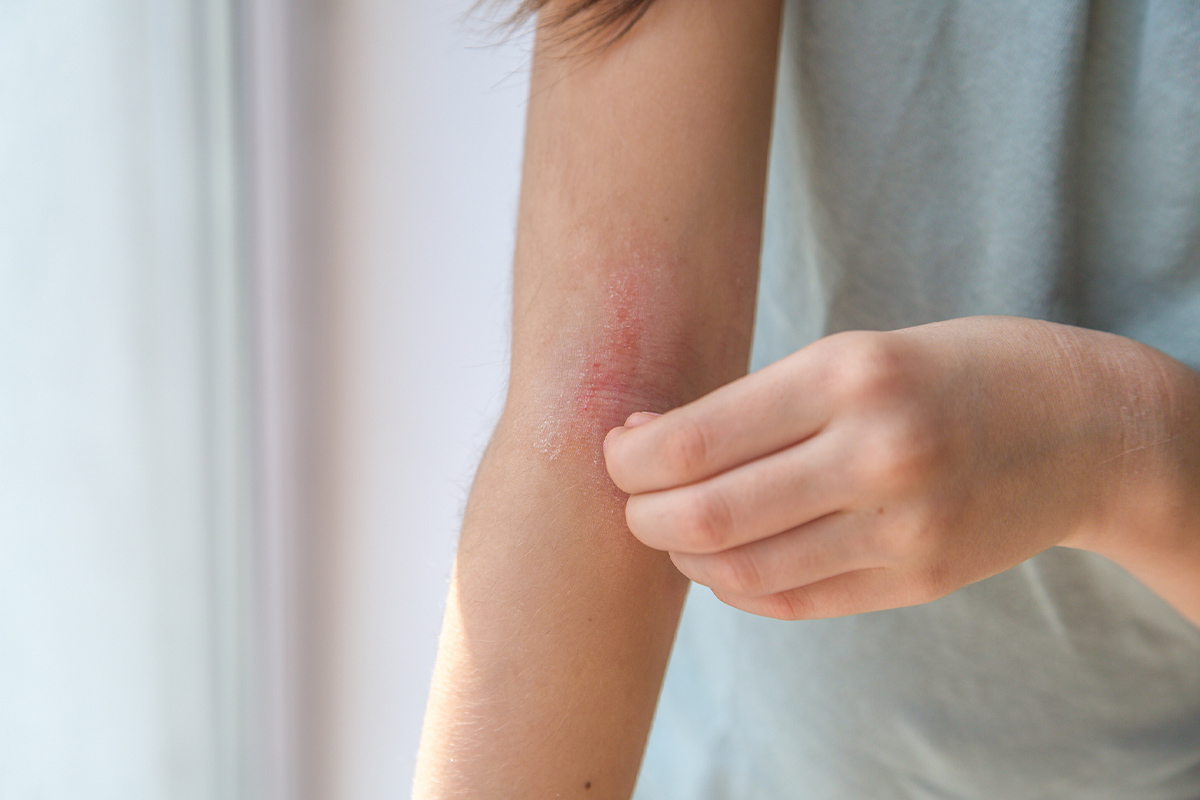
Eczema
Eczema, also known as atopic dermatitis, is a chronic skin condition characterized by red, itchy, and inflamed patches of skin. It often appears on the face, hands, elbows, and knees but can affect any body part. Eczema results from genetic and environmental factors, including a weakened skin barrier, allergens, and stress. The condition can cause dry, flaky skin, blisters, and intense itching, leading to discomfort and irritation. While there is no cure, eczema can be managed with moisturizers, treatments, lifestyle adjustments, and avoiding triggers.
Signs and Symptoms of Eczema:
- Red, inflamed, or swollen patches of skin
- Dry, flaky, or scaly skin texture
- Intense itching, which may worsen at night
- Small, raised bumps that may ooze fluid when scratched
- Thickened, cracked, or leathery skin in chronic cases
- Skin discoloration (lighter or darker areas) after healing
- Commonly affects the face, hands, elbows, knees, and feet
Fungal Infections
Fungal infections are caused by fungi, such as yeasts or molds, that thrive in warm, moist environments. They can affect the skin, nails, hair, and even internal organs. Common skin fungal infections include athlete’s foot, ringworm, and jock itch, which cause itching, redness, scaling, and discomfort. Nail fungal infections can lead to thickened, discolored, and brittle nails. These infections are often contagious and spread through contact with infected individuals, surfaces, or contaminated items. Treatment typically involves antifungal creams, oral medications, and proper hygiene practices.
Symptoms of Fungal Infections and When To See A Dermatology Specialist:
- Red, itchy, or scaly patches on the skin
- Ring-shaped rashes with a clear center (common in ringworm)
- Blisters, cracking, or peeling skin, especially between toes (athlete’s foot)
- Thickened, discolored, or brittle nails (nail fungal infections)
- White, yellow, or brown patches on nails
- Flaky, dry skin with a rough texture
- Itching, burning, or discomfort in affected areas

Hives
Hives, also known as urticaria, are red, itchy, and raised welts that appear on the skin due to an allergic reaction or other triggers. They can vary in size and may join together to form larger areas of swelling. Hives can result from reactions to foods, medications, insect stings, or exposure to heat, cold, or stress. They often appear suddenly and can last a few minutes to several hours, sometimes persisting for days. Treatment typically involves antihistamines to relieve itching and inflammation, along with avoiding known triggers.
Signs and Symptoms of Hives:
- Red, raised, and itchy welts on the skin
- Welts that vary in size and shape, often with clear borders
- Swelling or puffiness in affected areas
- Welts that can change shape, move around, or disappear and reappear
- Skin redness or blanching when pressure is applied to the welts
- Itching that may intensify with heat, stress, or irritation
- Can occur anywhere on the body, including the face, hands, and torso
Infections
Infections occur when harmful microorganisms, such as bacteria, viruses, fungi, or parasites, invade the body and multiply, leading to illness or inflammation. Skin infections can result from cuts, bites, or contact with infected surfaces, causing symptoms like redness, swelling, pain, and pus. Common skin infections include cellulitis, impetigo, and fungal infections. Treatment typically involves antibiotics, antifungals, or antiviral medications, depending on the type of microorganism causing the infection.
Signs and Symptoms of Infections Requiring A Sarasota Dermatologist:
- Redness, warmth, and swelling around the affected area
- Pain or tenderness at the site of infection
- Pus, drainage, or fluid-filled blisters
- Skin rash or discoloration
- Fever, chills, or general feeling of being unwell
- Enlarged lymph nodes near the infected area
- Wound that does not heal or shows signs of worsening
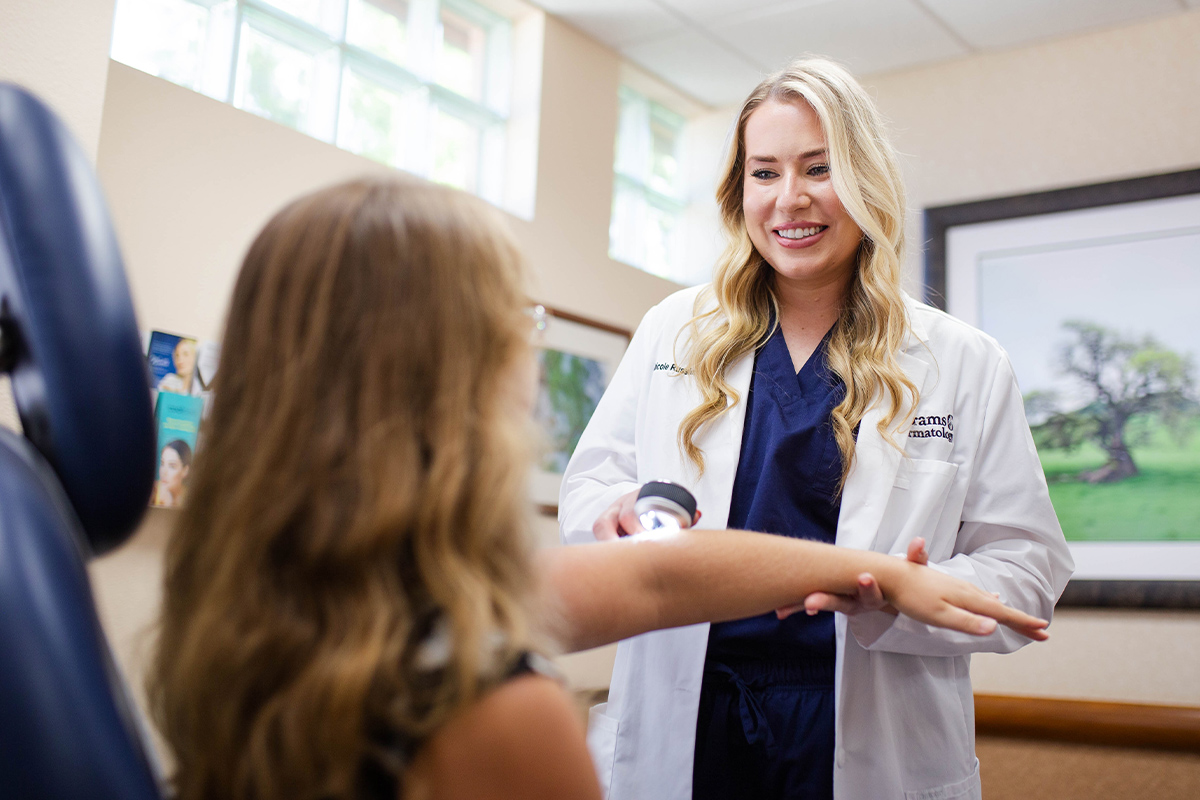
Melanoma
Melanoma is a serious type of skin cancer that develops in the melanocytes, the cells responsible for producing pigment (melanin) in the skin. It often appears as a new, unusual mole or changes in an existing mole, characterized by irregular shape, uneven color, and asymmetry. Melanoma can develop on any part of the body, even in areas not typically exposed to the sun. While less common than other skin cancers, melanoma is more dangerous because it can spread (metastasize) to other organs. Early detection and treatment is crucial.
Signs and Symptoms of Melanoma:
- Asymmetrical moles or skin lesions
- Irregular or poorly defined borders
- Variations in color, including shades of brown, black, red, white, or blue
- Diameter larger than 6 millimeters (about the size of a pencil eraser)
- Changes in size, shape, or color of an existing mole
- New moles or growths on the skin
- Itching, bleeding, or crusting of a mole or spot
- Lesions that do not heal or continue to grow
Psoriasis
Psoriasis is a chronic autoimmune skin condition that speeds up the life cycle of skin cells, causing them to build up rapidly on the surface. This results in thick, red patches covered with silvery-white scales commonly appearing on the elbows, knees, scalp, and lower back. Psoriasis can vary in severity, from small, localized patches to widespread areas. Although there is no cure, topical creams, phototherapy, and systemic medications can help manage flare-ups and reduce inflammation and scaling.
Signs and Symptoms of Psoriasis:
- Thick, red patches of skin with silvery-white scales
- Dry, cracked skin that may bleed or itch
- Itching, burning, or soreness in affected areas
- Raised, inflamed plaques on the elbows, knees, scalp, and lower back
- Small, red spots
- Thickened, pitted, or ridged nails
- Stiff or swollen joints in cases associated with psoriatic arthritis

Rashes
Rashes are noticeable changes in the color, texture, or appearance of the skin, often resulting in redness, bumps, patches, or blisters. They can be caused by various factors, including allergic reactions, infections, heat, or contact with irritants. Rashes can appear suddenly or develop gradually and may be itchy, painful, or produce a burning sensation. The treatment for rashes depends on the underlying cause and may involve topical creams, antihistamines, or avoiding triggers that lead to skin irritation.
Signs and Symptoms of Rashes:
- Red, pink, or discolored patches on the skin
- Bumps, blisters, or raised areas
- Itching, burning, or stinging sensations
- Dry, flaky, or peeling skin
- Skin that feels warm or tender to the touch
- Crusting, oozing, or fluid-filled blisters
- Swelling or thickening of the affected area
Rosacea
Rosacea is a chronic skin condition that primarily affects the face, causing redness, visible blood vessels, and sometimes small, pus-filled bumps. It often starts with a tendency to blush or flush more easily and can worsen over time. Rosacea may also cause a burning sensation, dry skin, and swelling, particularly on the cheeks, nose, chin, and forehead. Sun exposure, stress, spicy foods, and certain skincare products can trigger or aggravate symptoms. While there is no cure, topical creams, oral medications, and laser therapy can help manage symptoms.
Signs and Symptoms of Rosacea:
- Persistent redness on the cheeks, nose, chin, and forehead
- Visible blood vessels (spider veins) on the face
- Small, red, pus-filled bumps resembling acne
- Flushing or blushing that lasts longer than usual
- Dry, rough, or sensitive skin
- Burning or stinging sensations
- Swelling, particularly around the nose and cheeks
- Thickening of the skin, especially on the nose (in severe cases, known as rhinophyma)
If you’ve experienced these symptoms and wish to treat your rosacea effectively, contact our office for an appointment today.
Signs and Symptoms of Skin Tags:
- Small, soft, flesh-colored, or slightly darker growths
- Attached to the skin by a thin stalk (peduncle)
- Typically painless, but can cause irritation if rubbed or snagged
- Commonly found on the neck, armpits, groin, and eyelids
Signs and Symptoms of Moles:
- Round or oval spots ranging in color from brown to black
- Smooth or slightly raised texture
- Typically uniform in color, size, and shape
- Changes in size, color, or shape, or itching and bleeding should be evaluated
Spider Veins
Spider veins are small, thin blood vessels that appear close to the surface of the skin, forming web-like patterns of red, blue, or purple lines. They commonly develop on the legs, thighs, and face and are usually painless, though some people may experience itching, burning, or mild discomfort. While not typically a medical concern, they can be treated for cosmetic reasons using laser therapy, sclerotherapy, or lifestyle changes to improve circulation.
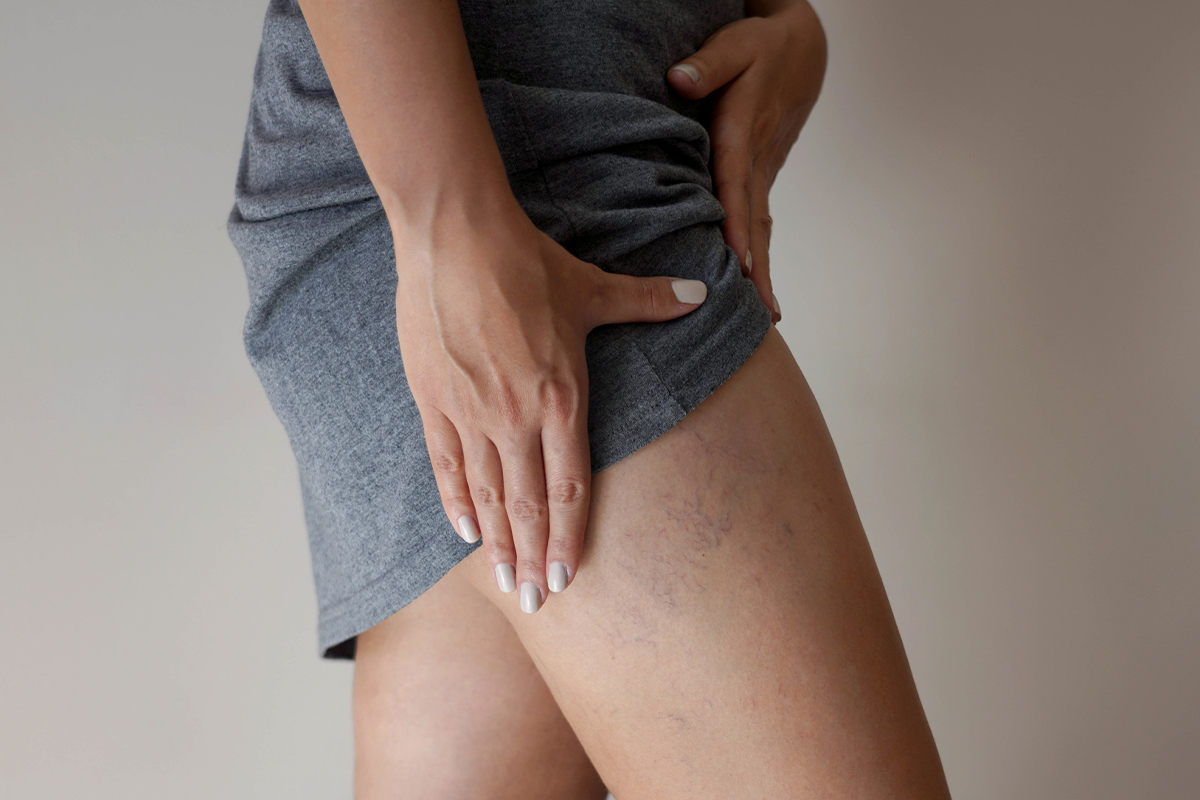
Signs and Symptoms of Spider Veins:
- Thin, web-like clusters of red, blue, or purple lines
- Visible just beneath the surface of the skin
- Commonly appear on the legs, thighs, ankles, and face
- Usually painless but can cause mild itching or burning
- May cause a feeling of heaviness or aching in the legs
- More noticeable after prolonged periods of standing or sitting
- Patterns can resemble a spider web or tree branches
Squamous Cell Carcinoma (SCC)
Squamous cell carcinoma (SCC) is a common type of skin cancer that develops in the squamous cells, which make up the outer layer of the skin. It often appears on sun-exposed areas such as the face, ears, neck, and hands, presenting as a scaly red patch, wart-like growth, or open sore that may crust or bleed. While SCC typically grows slowly, it can spread to other parts of the body if not treated. Early detection and treatment from a Sarasota dermatology specialist are crucial.

Signs and Symptoms of SCC:
- Scaly, red patches or rough, crusted growths on the skin
- Raised lumps or nodules that may be firm to the touch
- Open sores that do not heal or repeatedly bleed and scab over
- Wart-like growths that may become tender or painful
- Thickened, rough, or crusted skin areas
- Lesions with a central depression or ulceration
- Commonly found on sun-exposed areas like the face, ears, neck, hands, and arms
- Changes in existing skin growths, such as rapid enlargement or new symptoms
Sun Damage
Sun damage, also known as photoaging, refers to the harmful effects of ultraviolet (UV) radiation from the sun on the skin. Prolonged sun exposure can lead to premature aging, characterized by wrinkles, fine lines, and uneven skin tone. It can also cause sunburn, dark spots, and a rough, leathery texture. Over time, repeated sun exposure increases the risk of developing skin conditions like actinic keratoses and skin cancers, requiring the help of a specialist in dermatology in Sarasota. Preventive measures such as using sunscreen and avoiding peak sun hours can help reduce sun damage.
Signs and Symptoms of Sun Damage:
- Fine lines and wrinkles, especially around the eyes and mouth
- Dark spots (sunspots) or patches of hyperpigmentation
- Rough, dry, or leathery skin texture
- Uneven skin tone and redness
- Visible blood vessels (broken capillaries) on the face or nose
- Loss of skin elasticity, leading to sagging
- Sunburns with redness, swelling, and peeling
- Formation of actinic keratoses (precancerous, rough patches)
Warts
Warts are small, rough, skin growths caused by the human papillomavirus (HPV). They can appear anywhere on the body but are most common on the hands, feet, and face. Warts vary in appearance and may be raised, flat, or have a rough, cauliflower-like texture. They are generally harmless but can be contagious, spreading through direct contact with the wart or surfaces it has touched. Treatment options may include topical medications, cryotherapy, laser therapy, and minor surgical removal.
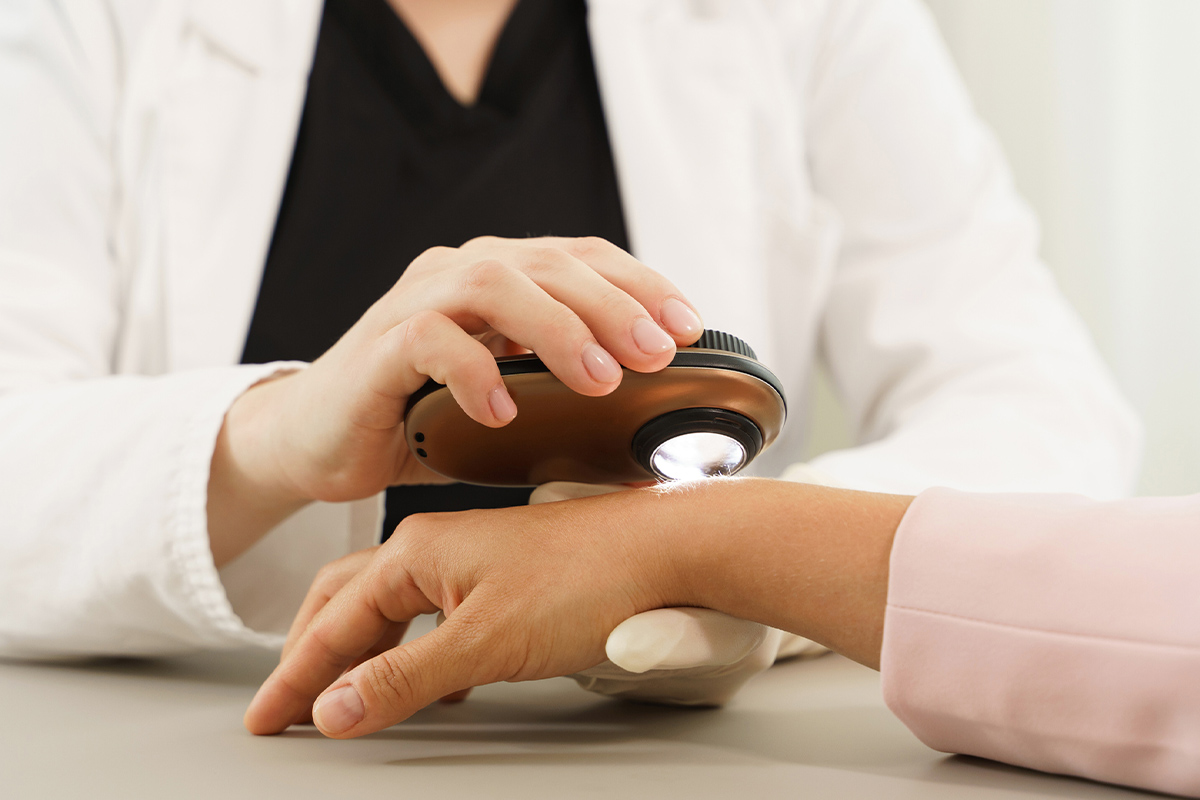
Signs and Symptoms of Warts:
- Small, rough, and raised bumps on the skin
- Flesh-colored, white, pink, or brown appearance
- Black pinpoints (tiny blood vessels) visible on the surface
- Rough, grainy texture that may resemble a cauliflower
- Can appear singly or in clusters
- Commonly found on hands, fingers, feet (plantar warts), and face
- Plantar warts may cause pain or discomfort when walking
Schedule Your Consultation With Our Dermatology Center in Sarasota
Abrams Dermatology is dedicated to restoring healthy skin through personalized treatment plans tailored to your needs. Our experienced team, led by Dr. Bradley J. Abrams, specializes in diagnosing and managing various skin conditions, from acne and eczema to skin cancer and sun damage. Schedule a consultation today to discuss your concerns and identify the best treatment options to reclaim flawless, healthy skin.
